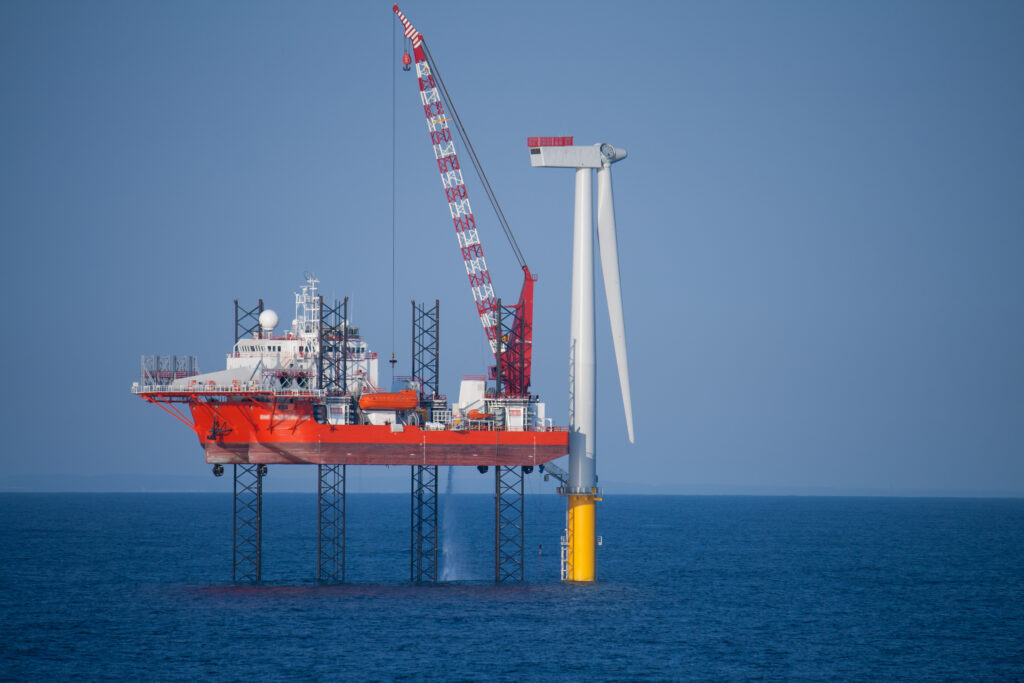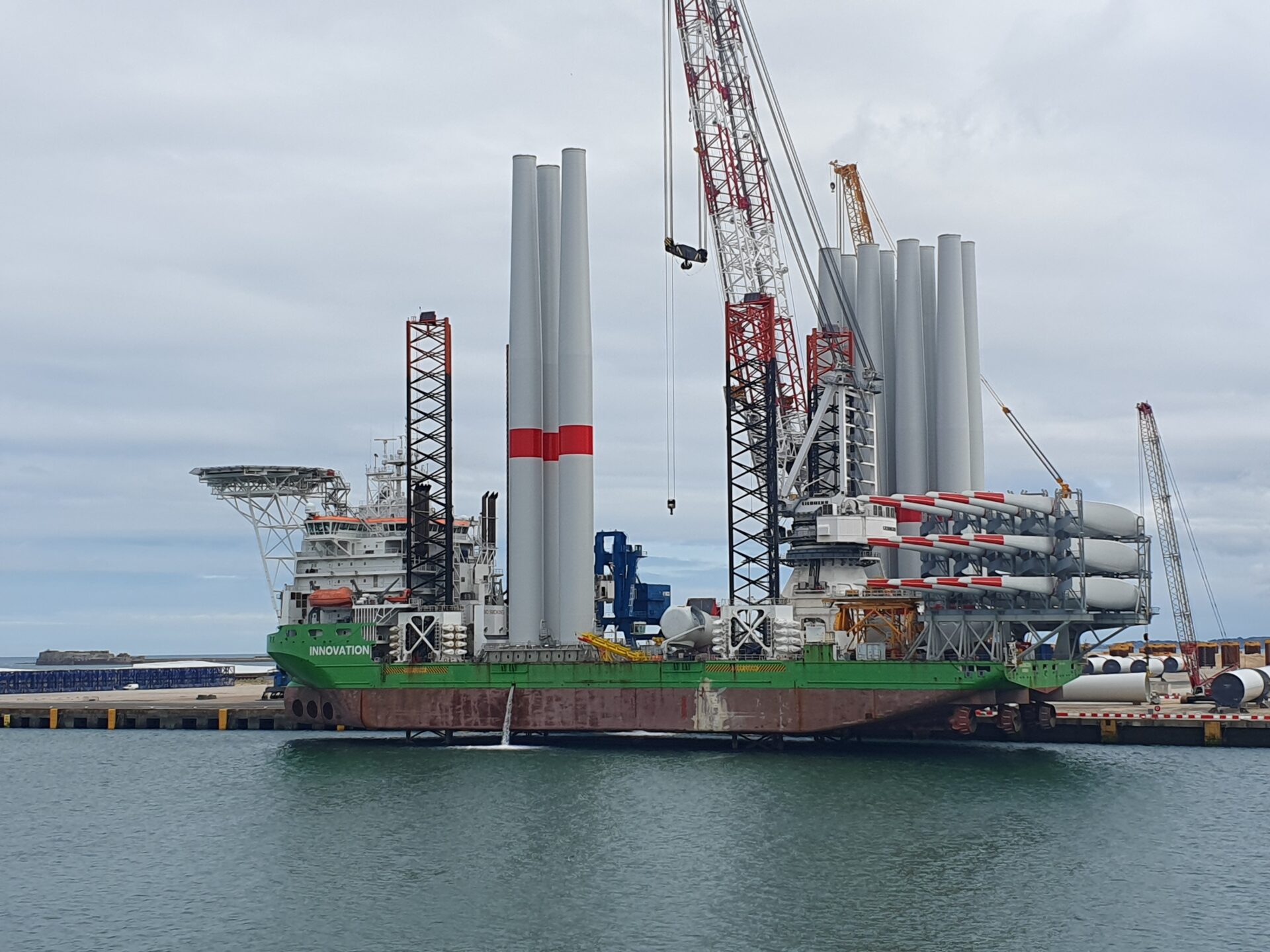Ports are vital arteries of the offshore wind industry, serving as hubs that enable the entire lifecycle of a wind farm, from construction to operation. But navigating the complex logistics and infrastructure involved requires understanding a specific set of terminology.
OEP’s work is not limited to a single region; our team provides expert, independent support to governments and civil society to fast-track high-ambition offshore wind energy across the globe.
For example, our collaboration with SYSTEMIQ resulted in a detailed analysis of potential port infrastructure in Brazil, where we provide strategic advice to help the country’s energy transition. You can read more about this in the SYSTEMIQ report on offshore wind ports.
“Ports are absolutely central to the success of offshore wind. Not only are they the logistical and industrial backbone for component assembly, they can also act as central coordinating hubs for the growth of offshore wind across different regions. The strategic investment in ports is essential to scaling offshore wind efficiently and competitively,” Julia Paletta, Country Head, Brazil.
At Ocean Energy Pathway (OEP), we work to support the sustainable, nature-aligned development of this foundational sector, and that starts with clarity on definitions. Here is a quick guide to some key terms related to ports and their role in offshore wind.
“The strategic investment in ports is essential to scaling offshore wind efficiently and competitively.”
Julia Paletta, Country Head, Brazil

1. Project Lifecycle & Port Functions
- Manufacturing Port: These are the facilities where large-scale components like turbine blades, towers, and foundations are produced. They are often located close to a supply chain cluster and have deepwater berths and heavy-lift capabilities to handle the massive components as they are completed.
- Marshalling Port: A critical hub where all the components from various manufacturers—blades, nacelles, towers, and foundations—are delivered, stored, and then “pre-assembled” into larger structures before being loaded onto installation vessels.
- Operations & Maintenance (O&M) Port: Once a wind farm is operational, this port becomes the long-term base for its upkeep. It hosts the crew transfer vessels (CTVs) and service operation vessels (SOVs) that transport technicians and equipment to and from the wind farm. These ports typically require dedicated dockside facilities, warehousing for spare parts, and office space for the O&M team.
- Decommissioning Port: At the end of a wind farm’s 25-30 year life, this is the port that handles the reverse logistics of dismantling the turbines and foundations. It must be equipped to receive and process heavy, oversized components for recycling and disposal.
2. Key Infrastructure & Equipment
- Heavy-Lift Quayside: A specialised quay (or dock) that is structurally reinforced to support extremely heavy loads, often exceeding 100 tonnes per square metre. This is essential for the storage and handling of offshore wind components like monopile foundations and substation topsides.
- Laydown Area: This refers to the large, open, flat land area adjacent to the quayside. It is used for the temporary storage of components and for the pre-assembly process, where components are arranged and prepared for load-out onto vessels.
- Crew Transfer Vessel (CTV): A high-speed vessel used to transfer technicians and smaller equipment from the O&M port to the offshore wind farm.
- Service Operation Vessel (SOV): A larger, more sophisticated vessel that provides at-sea accommodation and workshop facilities for technicians, allowing for multi-day O&M missions on far-from-shore wind farms.
- Installation Vessel: A highly specialised ship, often a jack-up vessel, used to transport and install the foundations, towers, and turbines offshore. Its legs are lowered to the seabed, lifting the hull out of the water to create a stable platform for lifting operations.
3. Project-Related Terms
- Feeder Vessel: A vessel that transports components from a manufacturing or storage port to an installation vessel already on site, often used to improve logistics efficiency and reduce turnaround times.
- Tow-to-Port Maintenance: A maintenance strategy used for floating offshore wind turbines where the entire turbine is disconnected from its mooring and towed back to a specialist port for major repairs, rather than being serviced offshore.
Understanding these terms is key to appreciating the complex and collaborative effort that brings clean, reliable wind energy to our communities. By providing independent support and working with leaders in policy and industry, OEP helps to ensure this sector is sustainable, resilient, and delivers lasting value for everyone.
The growth of offshore wind is not just about turbines and cables, it’s about a global network of logistics and expertise. Ports are at the heart of this network, acting as gateways for the energy transition.
As a critical partner in this journey, OEP is committed to accelerating the development of a sustainable offshore wind sector that enhances marine ecosystems and empowers local communities.




